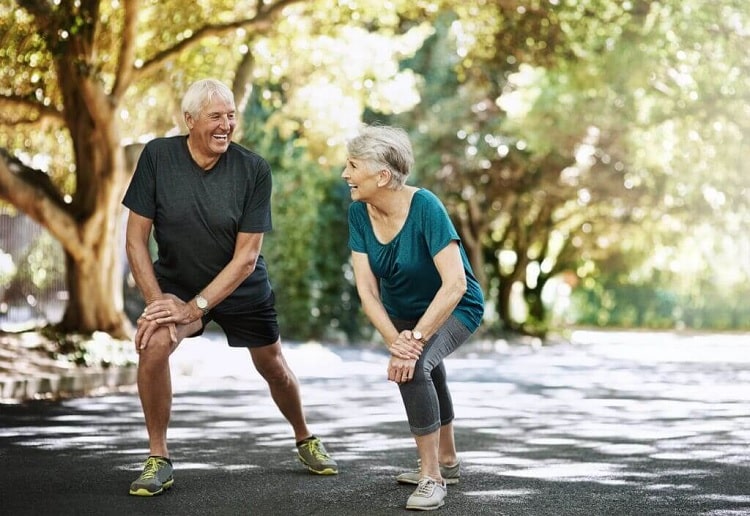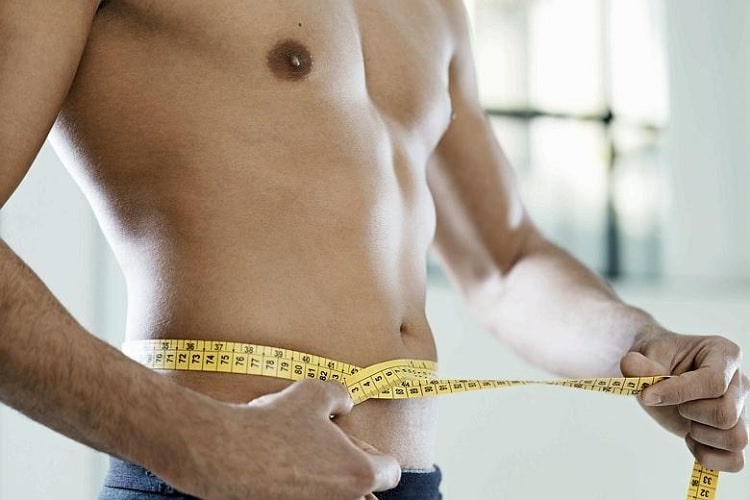Lose Weight While Enjoying the Great Outdoors: Hiking 101
Hiking is a fun-filled activity that can lower your stress levels and provide you with more energy. While hiking can be a great way to connect with nature, it does have much more health advantages in the long run. As it is a low-intensity exercise, people of all ages and weights can enjoy the activity. You may wonder if it is suitable for effective weight loss. There are many factors that could influence the weight-loss effects of hiking.
Doing hiking in an optimal way can help you shed more pounds. People achieve their weight loss goals by adopting different methods and being consistent in them. You have to determine which method suits your goals and health. Hiking can be an effective way to lose weight and improve your wellness. In this article, we will look at how hiking can aid with weight loss as well as some helpful hiking weight loss techniques.

Is Hiking Good for Weight Loss?
In order to lose weight, you have to burn more calories than you consume in a day. Hiking is a low-impact exercise that helps to burn more calories. When you engage in low-impact activities like hiking, your body can metabolize fat and lose weight steadily.
Your body needs oxygen to turn stored fat into energy. When you go hiking, your body will utilize stored fat for fuel. Hiking can thus metabolize glucose stores in the body and aid in losing weight effectively.
A 150-pound person with an average walking speed of 2.9 – 3.5 mph in mild terrain can lose 360 calories. Increasing the intensity of your hiking can increase calorie burning and reduce fat storage. As hiking is a low-impact activity, it is easy on the joints, thus making it ideal for overweight or obese people. The more weight a person has, the more calories they can burn when trekking.
A 2017 study published in the Journal of Nutrition found that moderate walking, like hiking, resulted in significant reductions in fat mass and body weight in obese and overweight adults in a 12-week controlled trial. Hiking is a form of cardio that gets your heart rate up and increases fat burning.
When you are involved in aerobic workouts like hiking, your muscles will get increased blood flow and oxygen levels. Therefore, hiking can aid in effective weight loss.
How Many Calories Does Hiking Burn?
The number of calories you can burn by hiking depends on multiple factors. When you understand how these factors impact your weight loss, you can utilize the same to burn more calories per day. We shall delve into the primary variables that influence the weight loss effects of hiking.
Body Weight
Fitness level plays a vital role in the rate at which your body burns calories. If you weigh more, your body will burn more calories by hiking. This is attributed to the fact that your body can tolerate higher physical activity thresholds when you’re fit.
A 180-pound individual burns 312 calories while hiking three miles, while a 150-pound person burns 264 calories. Hiking can thus help burn more calories in overweight and obese people.
Intensity
The intensity at which you’re hiking has an impact on your calorie burn rate. The number of calories your body burns during and after a hike can be increased by hiking faster for at least 45 minutes. When you hike at a sustained vigorous pace, your metabolism revs up, enabling your body to burn more calories even at rest.
If you burn 300 calories per hour at a moderate speed of three miles per hour, increasing your speed to four miles per hour will burn 100 calories more. It is best to start with a moderate pace and increase the speed gradually to lose weight steadily.
Backpack Weight
Your backpack, which adds pounds to your back, increases the calories you’ll expend based on its weight. The more your backpack weighs, the more calories you can burn when hiking. A light backpack may result in a calorie burn of 50 or 100 per hour on the path, whereas a large backpack may result in a calorie burn of 200 per hour.
If you’re planning to lose weight by hiking, you can start with a light backpack and then consider increasing your backpack weight to notice better results.
Terrain
The nature of the terrain you hike on has a considerable impact on your weight. Walking uphill on a steeper slope burns more calories than walking downhill on a flat gravel road. When you walk on rough terrains like sand, mud, and snow, your body requires more energy than when walking on level ground. Thus, hiking on uneven terrain boosts calorie burning and aids in weight loss.
The more inclined your trail is, the more calories you can burn when hiking. This is due to the fact that steeper trails require plenty of energy and fuel than flat paths. When walking on an incline of 10 percent or more, your calorie burn rate will double, resulting in effective weight loss. Walking uphill can burn up to 400 more calories per hour than walking downhill.
Temperature
Hiking in colder temperatures can aid in burning more calories. In particular, shivering when hiking in colder temperatures can lead to increased calorie burning and support weight loss. This is because your body burns more calories to generate heat and balance your body’s core temperature. Hiking in chilly weather that causes shivering can help you burn more calories and lose weight.
Besides these variables, gender can also play a role in the rate at which your body burns calories. Men often burn more calories than women due to their larger ratio of muscle to fat. In addition, men might require more calories per day to maintain their weight than women.
Tips for Effective Weight Loss Through Hiking
When you decide to lose weight by hiking, you can follow specific valuable methods to improve your results. Hiking boosts calorie burning and promotes weight loss. Here are some helpful techniques that can help you burn more calories when hiking.
- Start with the right gear: When you have the right equipment, you’ll be able to sustain hiking for a longer duration. When hiking long distances, it could be imperative to pack the necessary supplies, such as comfortable footwear, suitable clothing, food, and water.
- Choose an optimal trail: Choosing trails with elevation gain can increase your calorie burning and aid in weight loss. Hiking uphill improves blood circulation and supports burning more calories as it is an excellent form of cardio and strength training exercise.
- Practice stretching and cool-downs: Before you begin hiking, you can do warm-ups to prepare your muscles for the exercise. When you practice some stretching exercises, your body can adjust to the pace of your hiking and support weight loss.You can consider a couple of squats and lunges to burn more calories and tone your body. After hiking, it’s essential to cool down. Walking at a leisurely pace for 5 minutes, along with some stretching, can aid in muscle repair and recovery.
- Set reasonable goals: Setting reasonable goals can help to stay consistent in your weight loss efforts. Your target can be to hike twice per week for at least 30 minutes. It is best to start with small, achievable goals and then increase the pace and duration of hiking to achieve better outcomes.
Apart from these, you have to pay close attention to how your body responds to the exercises. In order to be safe, it is critical to take a break if you feel fatigued and resume only when you feel better. Following these helpful methods can help you lose weight significantly.
Calories Burned in Hiking Vs. Other Cardio Exercise
The number of calories you burn when hiking differs based on multiple variables, including the incline of your hike, backpack weight, the distance of your hike, the pace, and the terrain. An average person hiking on a flat surface with no backpack is likely to burn 300 calories per hour.
Walking
Walking on a flat surface can help you burn calories. The number of calories you can burn while walking depends on your weight, the incline of the walk, and the pace at which you walk. Walking can help you burn as many as 450 calories per hour. When you add an incline to your walk, you can see better weight loss results.
Cycling
The number of calories you can expend through cycling varies based on your weight, the type of bike you ride, and the path on which you are riding. You can burn up to 700 calories per hour while cycling. Cycling uphill on a mountain bike will help burn more calories than pedaling a low-resistance road bike on a flat road.
Swimming
Swimming is an aerobic exercise that works both your arm and leg muscles. The pace at which you swim has an impact on your calorie burn rate. You can burn up to 900 calories per hour while swimming. A person of average weight swimming freestyle at a fast pace will burn 817 calories.
Aerobic workouts can help you burn calories and aid in weight loss. Hiking can be among the finest exercises for weight loss when compared to other cardio activities such as walking, cycling, and swimming.
What Are the Benefits of Hiking?
When you engage in physical activities like hiking, you’ll be able to enjoy various health advantages. Hiking is a low-impact exercise that can provide multiple health benefits. We shall look at some of the primary benefits of hiking.
Improves Heart Health
Hiking is a cardiac exercise that improves your circulation and strengthens your heart. Engaging in moderate-intensity exercises like hiking can improve your VO2 max and support your cardiovascular health.
When you have an enhanced oxygen consumption, your muscles can extract oxygen from your circulating blood efficiently. Studies show that exercising on a regular basis can lower blood pressure and improve your heart health. When you engage in cardio exercises, including hiking, you are at a reduced risk of heart disease.
Controls Blood Sugar Levels
Hiking can help you control your blood sugar levels and boost your body’s sensitivity to insulin. When you engage in exercises like hiking, you are at a reduced risk of diabetes. It is essential to have control of blood sugar levels for weight loss because high blood sugar levels can increase your appetite and lead to weight gain. Engaging in periodic bouts of exercise could bring down the levels of blood sugar in diabetic people.
Reduces Stress and Improves Mood
Being out in nature is therapeutic and can reduce symptoms of stress, anxiety, and depression. Exercise in nature has a soothing impact that controls your parasympathetic activity and reduces your sympathetic activity or your fight-or-flight reaction. Hiking in nature with an abundance of green can benefit your mental health.
Exercises like hiking cause your body to release endorphins, which are hormones that can alleviate pain and lift your spirits. Hiking also raises levels of the neurotransmitters serotonin and norepinephrine, which can help with stress and improve your mood.
Improves Sleep
Studies show that exercises, including hiking, can improve your sleep quality. When you are exposed to vitamin D, you can have control over your wake-sleep cycle. Being outdoors and exercising can thus improve your sleep. Sleep is essential for various bodily functions. When you sleep better, you can maintain your weight.
Strengthens Muscles and Bones
Hiking can help to build strong muscles and bones. Involving in exercises like hiking can work your muscles and improve your bone density. Muscles may stay active and engaged through hiking. Due to the fact that hiking increases heart rate without placing too much stress on the joints, it can assist people with arthritis in managing pain and morning stiffness.
The Bottom Line
Exercising on a regular basis can be an effective way to lose weight. In particular, cardio exercises like hiking increase your heart rate and boost fat burning. When you hike three times per week for two hours each, you can lose nearly one pound per week if you follow a balanced diet.
Even though more calories are burned during a hike, it is still best to consume the appropriate amount of nutrients each day to preserve your health. It would help if you replenished your macronutrients during your hike in order to sustain your stamina. Planning your hike based on your weight loss goals, weight, and diet can help you achieve better outcomes.
Faqs
The number of calories burned varies on a number of variables, including time, terrain, weight, pace, and backpack weight. Hiking burns extra calories because paths are often steeper and uneven. Hiking on rough terrain at a rapid pace allows you to burn more calories and attain your weight loss goals.
Since hiking is easy on the joints and is low impact, it can be a great way to lose weight for people of all ages and fitness levels. When you start out with hiking, you can hike at a moderate pace twice or thrice a week for at least 30 minutes. You can gradually increase the speed and duration for sustainable weight loss. It is generally advised to engage in 150 – 300 minutes of moderate-intensity exercise each week in order to lose weight.
Cardio exercises, including hiking, can help you burn fat in different parts of the body. Hiking can boost calorie burning and lead to a reduction of fat in various body parts, including the abdominal region. When you hike thrice per week for at least 30 minutes at a fast pace, you can lose your belly fat.







